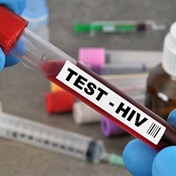Data on 7,916 HIV-infected individuals in Britain who began standard triple-drug therapy showed that only 167 developed extensive resistance to all three types of medication, the researchers found.
The risk of such "triple-class" failure at the end of 10 years was estimated at 9.2 percent, according the study, published in the British medical journal The Lancet.
This is good news all around, the study said, and especially for the developing world, where second- and third-line drug therapies - used when first-line treatments no longer work - are too expensive for most HIV patients and are likely to remain so for a long time.
But a team of scientists led by Andrew Phillips of the Royal Free and University College Medical School added a cautionary note: when the three-drug cocktail that has begun to hold the worldwide AIDS epidemic in check did fail, it does so with a vengeance.
Of those patients for whom the trio stopped working, 90 percent were resistant to seven first-line drugs, and a large proportion of those - 58 percent - failed second-line therapies as well.
Implications for the developing world
"This finding has implications for the treatment of patients in
developing countries," commented Edward Mills of the British Columbia
Centre for Excellence in HIV/Aids in Canada, and Jean Nachega of John
Hopkins University in the United States, also in The Lancet.
"In such settings, only one or two regimes are normally available, which results in disastrous consequences when these regimes fail," they said.
The three main classes of front-line HIV antiretroviral drugs - nucleoside reverse transcriptase inhibitors, non-nucleoside reverse transcriptase inhibitors, and protease inhibitors - are judged to have failed when they lose their ability to suppress the replication of the HIV virus, which cripples the immune system.
Mills and Nachega also point out that the British patients, compared to HIV-infected populations in poorer nations, typically started therapy when their immune systems still had a greater capacity to fight off the virus.
Higher CD4 count, better results
The rate of drug failure was higher for those whose white blood cell
count - measured in the level of CD4 molecules, which play a critical
role in activating the cells that fight infection - was lower than 200
when treatment began.
In poor nations, therapy rarely begins until the CD4 count has dropped below that threshold, the study said.
More than 33 million people around the world are living with HIV or Aids, more than two-thirds of them in sub-Saharan Africa, according to UNAIDS.
At the end of 2006, more than two million people there were getting the life-saving trio of pills, a 54-percent increase over the previous year, according to the World Health Organization (WHO).
Even so, only 10 percent of those in need are currently receiving treatment.
The UN agency estimates that there will be 2.5 million new infections in 2007, and that the disease will have claimed 2.1 million lives. - (Sapa/AFP)
Read more:
HIV/Aids Centre
December 2007




 Publications
Publications
 Partners
Partners














